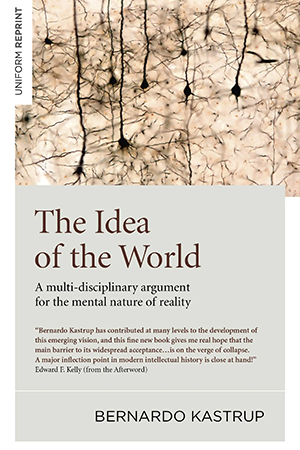
Library
Philosophy
Mark Balaguer
Free Will
In our daily life, it really seems as though we have free will, that what we do from moment to moment is determined by conscious decisions that we freely make. You get up from the couch, you go for a walk, you eat chocolate ice cream. It seems that we're in control of actions like these; if we are, then we have free will. But in recent years, some have argued that free will is an illusion. The neuroscientist (and best-selling author) Sam Harris and the late Harvard psychologist Daniel Wegner, for example, claim that certain scientific findings disprove free will. In this engaging and accessible volume in the Essential Knowledge series, the philosopher Mark Balaguer examines the various arguments and experiments that have been cited to support the claim that human beings don't have free will. He finds them to be overstated and misguided. Balaguer discusses determinism, the view that every physical event is predetermined, or completely caused by prior events. He describes several philosophical and scientific arguments against free will, including one based on Benjamin Libet's famous neuroscientific experiments, which allegedly show that our conscious decisions are caused by neural events that occur before we choose. He considers various religious and philosophical views, including the philosophical pro-free-will view known as compatibilism. Balaguer concludes that the anti-free-will arguments put forward by philosophers, psychologists, and neuroscientists simply don't work. They don't provide any good reason to doubt the existence of free will. But, he cautions, this doesn't necessarily mean that we have free will. The question of whether we have free will remains an open one; we simply don't know enough about the brain to answer it definitively.
Margaret Cuonzo
Paradox
An introduction to paradoxes showing that they are more than mere puzzles but can prompt new ways of thinking.Thinkers have been fascinated by paradox since long before Aristotle grappled with Zeno's. In this volume in The MIT Press Essential Knowledge series, Margaret Cuonzo explores paradoxes and the strategies used to solve them. She finds that paradoxes are more than mere puzzles but can prompt new ways of thinking. A paradox can be defined as a set of mutually inconsistent claims, each of which seems true. Paradoxes emerge not just in salons and ivory towers but in everyday life. (An Internet search for “paradox” brings forth a picture of an ashtray with a “no smoking” symbol inscribed on it.) Proposing solutions, Cuonzo writes, is a natural response to paradoxes. She invites us to rethink paradoxes by focusing on strategies for solving them, arguing that there is much to be learned from this, regardless of whether any of the more powerful paradoxes is even capable of solution. Cuonzo offers a catalog of paradox-solving strategies—including the Preemptive-Strike (questioning the paradox itself), the Odd-Guy-Out (calling one of the assumptions into question), and the You-Can't-Get-There-from-Here (denying the validity of the reasoning). She argues that certain types of solutions work better in some contexts than others, and that as paradoxicality increases, the success of certain strategies grows more unlikely. Cuonzo shows that the processes of paradox generation and solution proposal are interesting and important ones. Discovering a paradox leads to advances in knowledge: new science often stems from attempts to solve paradoxes, and the concepts used in the new sciences lead to new paradoxes. As Niels Bohr wrote, “How wonderful that we have met with a paradox. Now we have some hope of making progress.”
Tim Scanlon
What we owe to each other
How do we judge whether an action is morally right or wrong? If an action is wrong, what reason does that give us not to do it? Why should we give such reasons priority over our other concerns and values? In this book, T. M. Scanlon offers new answers to these questions, as they apply to the central part of morality that concerns what we owe to each other. According to his contractualist view, thinking about right and wrong is thinking about what we do in terms that could be justified to others and that they could not reasonably reject. He shows how the special authority of conclusions about right and wrong arises from the value of being related to others in this way, and he shows how familiar moral ideas such as fairness and responsibility can be understood through their role in this process of mutual justification and criticism.
Jonathan Westphal
The Mind-Body Problem
An introduction to the mind–body problem, covering all the proposed solutions and offering a powerful new one. Philosophers from Descartes to Kripke have struggled with the glittering prize of modern and contemporary philosophy: the mind-body problem. The brain is physical. If the mind is physical, we cannot see how. If we cannot see how the mind is physical, we cannot see how it can interact with the body. And if the mind is not physical, it cannot interact with the body. Or so it seems. In this book the philosopher Jonathan Westphal examines the mind-body problem in detail, laying out the reasoning behind the solutions that have been offered in the past and presenting his own proposal. The sharp focus on the mind-body problem, a problem that is not about the self, or consciousness, or the soul, or anything other than the mind and the body, helps clarify both problem and solutions. Westphal outlines the history of the mind-body problem, beginning with Descartes. He describes mind-body dualism, which claims that the mind and the body are two different and separate things, nonphysical and physical, and he also examines physicalist theories of mind; antimaterialism, which proposes limits to physicalism and introduces the idea of qualia; and scientific theories of consciousness. Finally, Westphal examines the largely forgotten neutral monist theories of mind and body, held by Ernst Mach, William James, and Bertrand Russell, which attempt neither to extract mind from matter nor to dissolve matter into mind. Westphal proposes his own version of neutral monism. This version is unique among neutral monist theories in offering an account of mind-body interaction.
Nick Montfort
The Future
The future is like an unwritten book. It is not something we see in a crystal ball, or can only hope to predict, like the weather. In this volume of the MIT Press's Essential Knowledge series, Nick Montfort argues that the future is something to be made, not predicted. Montfort offers what he considers essential knowledge about the future, as seen in the work of writers, artists, inventors, and designers (mainly in Western culture) who developed and described the core components of the futures they envisioned. Montfort's approach is not that of futurology or scenario planning; instead, he reports on the work of making the future—the thinkers who devoted themselves to writing pages in the unwritten book. Douglas Engelbart, Alan Kay, and Ted Nelson didn't predict the future of computing, for instance. They were three of the people who made it. Montfort focuses on how the development of technologies—with an emphasis on digital technologies—has been bound up with ideas about the future. Readers learn about kitchens of the future and the vision behind them; literary utopias, from Plato's Republic to Edward Bellamy's Looking Backward and Charlotte Perkins Gilman's Herland; the Futurama exhibit at the 1939 New York World's Fair; and what led up to Tim Berners-Lee's invention of the World Wide Web. Montfort describes the notebook computer as a human-centered alterative to the idea of the computer as a room-sized “giant brain”; speculative practice in design and science fiction; and, throughout, the best ways to imagine and build the future.
Bernardo Kastrup
Decoding Jungs Metaphysics
More than an insightful psychologist, Carl Gustav Jung was the twentieth century greatest articulator of the primacy of mind in nature, a view whose origins vanish behind the mists of time. Underlying Jungs extraordinary body of work, and providing a foundation for it, there is a broad and sophisticated system of metaphysical thought. This system, however, is only implied in Jungs writings, so as to shield his scientific persona from accusations of philosophical speculation. The present book scrutinizes Jung’s work to distil and reveal that extraordinary, hidden metaphysical treasure: for Jung, mind and world are one and the same entity; reality is fundamentally experiential, not material; the psyche builds and maintains its body, not the other way around; and the ultimate meaning of our sacrificial lives is to serve God by providing a reflecting mirror to God’s own instinctive mentation. Embodied in this compact volume is a journey of discovery through Jungian thoughtscapes never before revealed with the depth, force and scholarly rigor you are about to encounter.
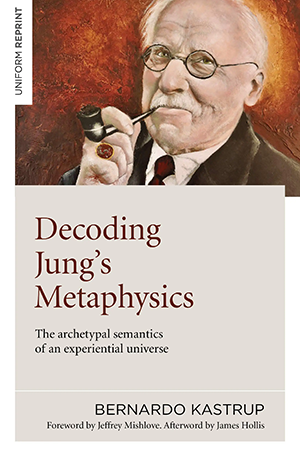
Michael Schur
How to Be Perfect
From the creator of The Good Place and the cocreator of Parks and Recreation, a hilarious, thought-provoking guide to living an ethical life, drawing on 2,400 years of deep thinking from around the world. Most people think of themselves as “good,” but it’s not always easy to determine what’s good or bad - especially in a world filled with complicated choices and pitfalls and booby traps and bad advice. Fortunately, many smart philosophers have been pondering this conundrum for millennia and they have guidance for us. With bright wit and deep insight, How to Be Perfect explains concepts like deontology, utilitarianism, existentialism, ubuntu, and more so we can sound cool at parties and become better people. Schur starts off with easy ethical questions like “Should I punch my friend in the face for no reason?” (No.) and works his way up to the most complex moral issues we all face. Such as: Can I still enjoy great art if it was created by terrible people? How much money should I give to charity? Why bother being good at all when there are no consequences for being bad? And much more. By the time the book is done, we’ll know exactly how to act in every conceivable situation, so as to produce a verifiably maximal amount of moral good. We will be perfect, and all our friends will be jealous. OK, not quite. Instead, we’ll gain fresh, funny, inspiring wisdom on the toughest issues we face every day.
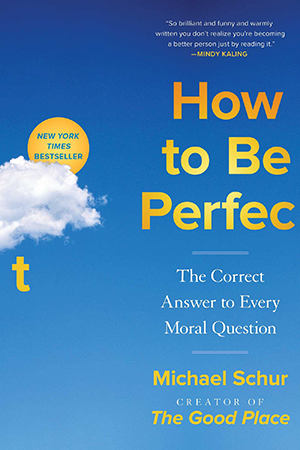
Douglas R. Hofstadter
Gödel, Escher, Bach
'What is a self and how can a self come out of inanimate matter? This is the riddle that drove Douglas Hofstadter to write this extraordinary book. In order to impart his original and personal view on the core mystery of human existence - our intangible sensation of 'I'-ness - Hofstadter defines the playful yet seemingly paradoxical notion of 'strange loop', and explicates this idea using analogies from many disciplines. By exploring common themes in the lives and works of logician Kurt Gödel, artist M. C. Escher, and composer Johann Sebastian Bach, the book expounds concepts fundamental to mathematics, symmetry, and intelligence. Through short stories, illustrations, and analysis, the book discusses how systems can acquire meaningful context despite being made of "meaningless" elements. It also discusses self-reference and formal rules, isomorphism, what it means to communicate, how knowledge can be represented and stored, the methods and limitations of symbolic representation, and even the fundamental notion of "meaning" itself. In response to confusion over the book's theme, Hofstadter emphasized that Gödel, Escher, Bach is not about the relationships of mathematics, art, and music—but rather about how cognition emerges from hidden neurological mechanisms. One point in the book presents an analogy about how individual neurons in the brain coordinate to create a unified sense of a coherent mind by comparing it to the social organization displayed in a colony of ants.
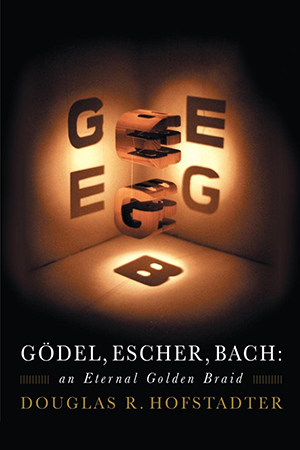
Dave Robinson
Introducing Ethics
What are the acceptable limits of scientific investigation and genetic engineering, the rights and wrongs of animal rights, euthanasia and civil disobedience? This book confronts these dilemmas, tracing arguments of moral thinkers, including Socrates, Plato, Aristotle, and brings us up to date with postmodern critics.
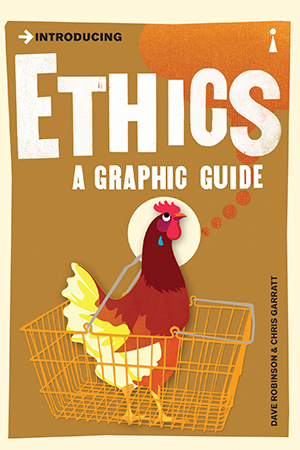
Nick Sousanis
Unflattening
The primacy of words over images has deep roots in Western culture. But what if the two are inextricably linked in meaning-making? In this experiment in visual thinking, drawn in comics, Nick Sousanis defies conventional discourse to offer readers a stunning work of graphic art and a serious inquiry into the ways humans construct knowledge.
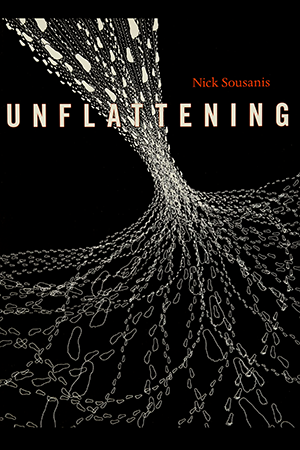
Carl Gustav Jung
Man and His Symbols
Explores Jung's psychological concepts regarding the nature, function and importance of man's symbols as they appear on both the conscious and subconscious level. Man and His Symbols owes its existence to one of Jung's own dreams. The great psychologist dreamed that his work was understood by a wide public, rather than just by psychiatrists, and therefore he agreed to write and edit this fascinating book. Here, Jung examines the full world of the unconscious, whose language he believed to be the symbols constantly revealed in dreams. Convinced that dreams offer practical advice, sent from the unconscious to the conscious self, Jung felt that self-understanding would lead to a full and productive life. Thus, the listener will gain new insights into himself from this thoughtful volume, which also illustrates symbols throughout history. Completed just before his death by Jung and his associates, it is clearly addressed to the general listener.
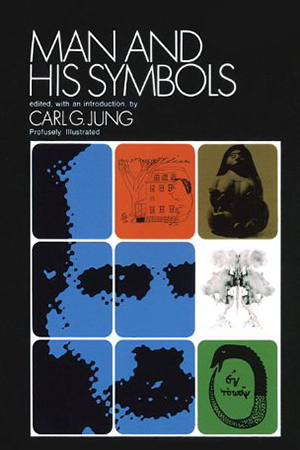
Jean-Paul Sartre
Being and Nothingness
Sartre explains the theory of existential psychoanalysis in this treatise on human reality. In the book, Sartre develops a philosophical account in support of his existentialism, dealing with topics such as consciousness, perception, social philosophy, self-deception, the existence of "nothingness", psychoanalysis, and the question of free will. Revisit one of the most important pillars in modern philosophy with this new English translation—the first in more than 60 years—of Jean-Paul Sartre’s seminal treatise on existentialism. “This is a philosophy to be reckoned with, both for its own intrinsic power and as a profound symptom of our time” . In 1943, Jean-Paul Sartre published his masterpiece, Being and Nothingness, and laid the foundation of his legacy as one of the greatest twentieth century philosophers. A brilliant and radical account of the human condition, Being and Nothingness explores what gives our lives significance. In a new and more accessible translation, this foundational text argues that we alone create our values and our existence is characterized by freedom and the inescapability of choice. Far from being an internal, passive container for our thoughts and experiences, human consciousness is constantly projecting itself into the outside world and imbuing it with meaning. Now with a new foreword by Harvard professor of philosophy Richard Moran, this clear-eyed translation guarantees that the groundbreaking ideas that Sartre introduced in this resonant work will continue to inspire for generations to come.
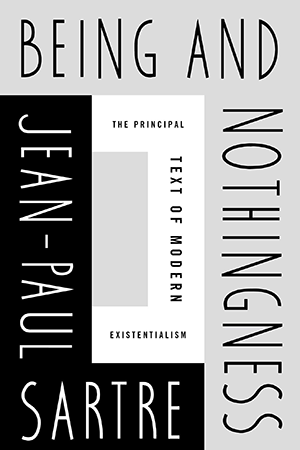
Bertrand Russell
History of Western Philosophy
First published in 1946, History of Western Philosophy went on to become the best-selling philosophy book of the twentieth century. A dazzlingly ambitious project, it remains unchallenged to this day as the ultimate introduction to Western philosophy. Providing a sophisticated overview of the ideas that have perplexed people from time immemorial, it is 'long on wit, intelligence and curmudgeonly scepticism', as the New York Times noted, and it is this, coupled with the sheer brilliance of its scholarship, that has made Russell's History of Western Philosophy one of the most important philosophical works of all time.
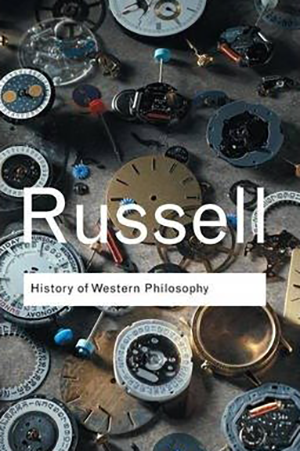
Galen Strawson
Things That Bother Me
An original collection of lauded philosopher Galen Strawson's writings on the self and consciousness, naturalism and pan-psychism. Galen Strawson might be described as the Montaigne of modern philosophers, endlessly curious, enormously erudite, unafraid of strange, difficult, and provocative propositions, and able to describe them clearly—in other words, he is a true essayist. Strawson also shares with Montaigne a particular fascination with the elastic and elusive nature of the self and of consciousness. Of the essays collected here, “A Fallacy of Our Age” (an inspiration for Vendela Vida’s novel Let the Northern Lights Erase Your Name) takes issue with the commencement-address cliché that life is a story. Strawson questions whether it is desirable or even meaningful to think about life that way. “The Sense of the Self” offers an alternative account, in part personal, of how a distinct sense of self is not at all incompatible with a sense of the self as discontinuous, leading Strawson to a position that he sees as in some ways Buddhist. “Real Naturalism” argues that a fully naturalist account of consciousness supports a belief in the immanence of consciousness in nature as a whole (also known as panpsychism), while in the final essay Strawson offers a vivid account of coming of age in the 1960s. Drawing on literature and life as much as on philosophy, this is a book that prompts both argument and wonder.
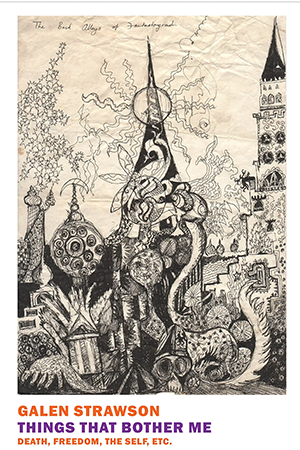
Dave Robinson
Introducing Philosophy
Philosophers have always enjoyed asking awkward and provocative questions, such as: What is the nature of reality? What are human beings really like? What is special about the human mind and consciousness? Are we free to choose who we are and what we do? Can we prove that God exists? Can we be certain about anything at all? What is truth? Does language provide us with a true picture of the world? How should we behave towards each other? Do computers think? Introducing Philosophy is a comprehensive graphic guide to the thinking of all the significant philosophers of the Western world from Heraclitus to Derrida. It examines and explains their key arguments and ideas without being obscure or solemn. Lively and accessible, it is the perfect introduction to philosophers and philosophical ideas for anyone coming to the subject for the first time.
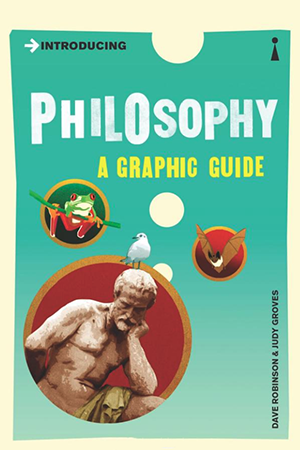
James Bridle
Ways of Being
Artist, technologist, and philosopher James Bridles Ways of Being is a brilliant, searching exploration of different kinds of intelligence—plant, animal, human, artificial—and how they transform our understanding of humans’ place in the cosmos. What does it mean to be intelligent? Is it something unique to humans or shared with other beings— beings of flesh, wood, stone, and silicon? The last few years have seen rapid advances in artificial intelligence. But rather than a friend or companion, AI increasingly appears to be something stranger than we ever imagined, an alien invention that threatens to decenter and supplant us. At the same time, we’re only just becoming aware of the other intelligences that have been with us all along, even if we’ve failed to recognize or acknowledge them. These others—the animals, plants, and natural systems that surround us—are slowly revealing their complexity, agency, and knowledge, just as the technologies we’ve built to sustain ourselves are threatening to cause their extinction and ours. What can we learn from them, and how can we change ourselves, our technologies, our societies, and our politics to live better and more equitably with one another and the nonhuman world? The artist and maverick thinker James Bridle draws on biology and physics, computation, literature, art, and philosophy to answer these unsettling questions. Startling and bold, Ways of Being explores the fascinating, strange, and multitudinous forms of knowing, doing, and being that make up the world, and that are essential for our survival. Includes illustrations
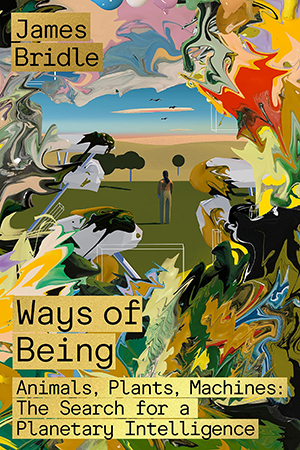
Douglas R. Hofstadter
I Am a Strange Loop
An original, endlessly thought-provoking, and controversial look at the nature of consciousness and identity argues that the key to understanding selves and consciousness is the strange loop a special kind of abstract feedback loop inhabiting our brains. Can thought arise out of matter? Can self, soul, consciousness, "I" arise out of mere matter? If it cannot, then how can you or I be here? I Am a Strange Loop argues that the key to understanding selves and consciousness is the "strange loop" - a special kind of abstract feedback loop inhabiting our brains. The most central and complex symbol in your brain is the one called "I". The "I" is the nexus in our brain, one of many symbols seeming to have free will and to have gained the paradoxical ability to push particles around, rather than the reverse. How can a mysterious abstraction be real - or is our "I" merely a convenient fiction? Does an "I" exert genuine power over the particles in our brain, or is it helplessly pushed around by the laws of physics? These are the mysteries tackled in I Am a Strange Loop, Douglas Hofstadter's first book-length journey into philosophy since Gödel, Escher, Bach. Compulsively listenable and endlessly thought-provoking, this is a moving and profound inquiry into the nature of mind.
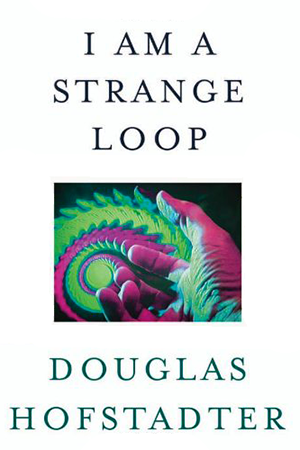
C. G. Jung
Collected Works of C.G. Jung, Volume 9
Essays which state the fundamentals of Jungs psychological system: On the Psychology of the Unconscious and The Relations Between the Ego and the Unconscious, with their original versions in an appendix. The concept of 'Archteypes' and the hypothesis of 'A Collective Unconscious' are two of Jung's better known and most exciting ideas. In this volume - taken from the Collected Works and appearing in paperback for the first time - Jung describes and elaborates the two concepts. Three essays establish the theoretical basis which are then followed by essays on specific archetypes. The relation of these to the process of individuation is examined in the last section. The Archetypes and the Collective Unconscious is one of Jung's central works. There are many illustrations in full colour.
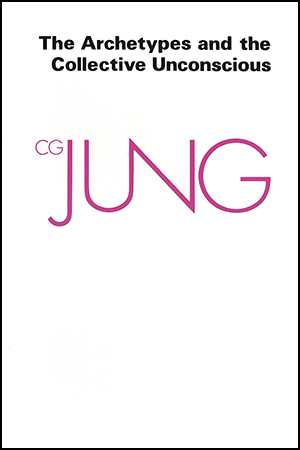
Graham Harman
Object-Oriented Ontology
What is reality, really? Are humans more special or important than the non-human objects we perceive? How does this change the way we understand the world? We humans tend to believe that things are only real in as much as we perceive them, an idea reinforced by modern philosophy, which privileges us as special, radically different in kind from all other objects. But as Graham Harman, one of the theory's leading exponents, shows, Object-Oriented Ontology rejects the idea of human specialness: the world, he states, is clearly not the world as manifest to humans. At the heart of this philosophy is the idea that objects - whether real, fictional, natural, artificial, human or non-human - are mutually autonomous. In this brilliant new introduction, Graham Harman lays out the history, ideas and impact of Object-Oriented Ontology, taking in everything from art and literature, politics and natural science along the way. Graham Harman is Distinguished Professor of Philosophy at SCI-Arc, Los Angeles. A key figure in the contemporary speculative realism movement in philosophy and for his development of the field of object-oriented ontology, he was named by Art Review magazine as one of the 100 most influential figures in international art.
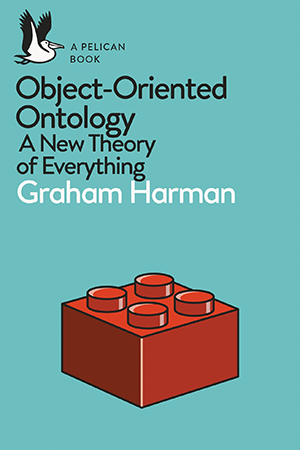
Bernardo Kastrup
The Idea of the World
A rigorous case for the primacy of mind in nature, from philosophy to neuroscience, psychology and physics. The Idea of the World offers a grounded alternative to the frenzy of unrestrained abstractions and unexamined assumptions in philosophy and science today. This book examines what can be learned about the nature of reality based on conceptual parsimony, straightforward logic and empirical evidence from fields as diverse as physics and neuroscience. It compiles an overarching case for idealism - the notion that reality is essentially mental - from ten original articles the author has previously published in leading academic journals. The case begins with an exposition of the logical fallacies and internal contradictions of the reigning physicalist ontology and its popular alternatives, such as bottom-up panpsychism. It then advances a compelling formulation of idealism that elegantly makes sense of - and reconciles - classical and quantum worlds. The main objections to idealism are systematically refuted and empirical evidence is reviewed that corroborates the formulation presented here. The book closes with an analysis of the hidden psychological motivations behind mainstream physicalism and the implications of idealism for the way we relate to the world.
